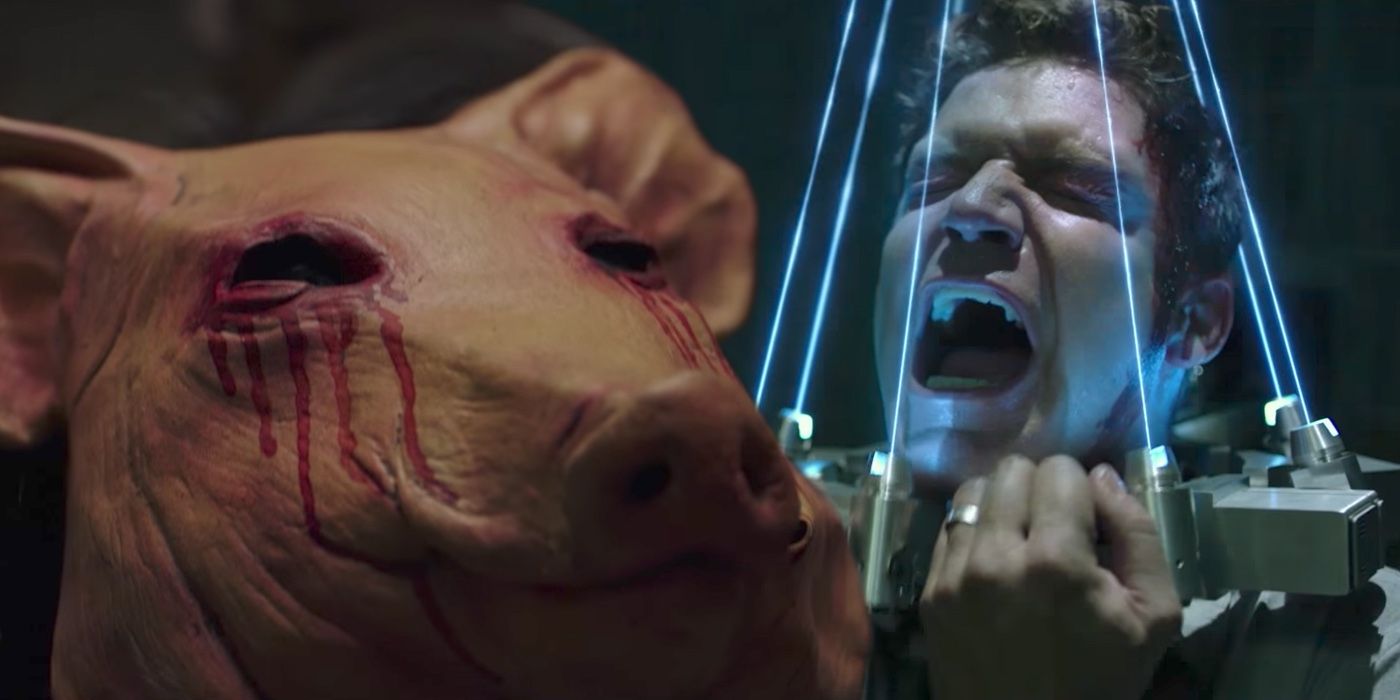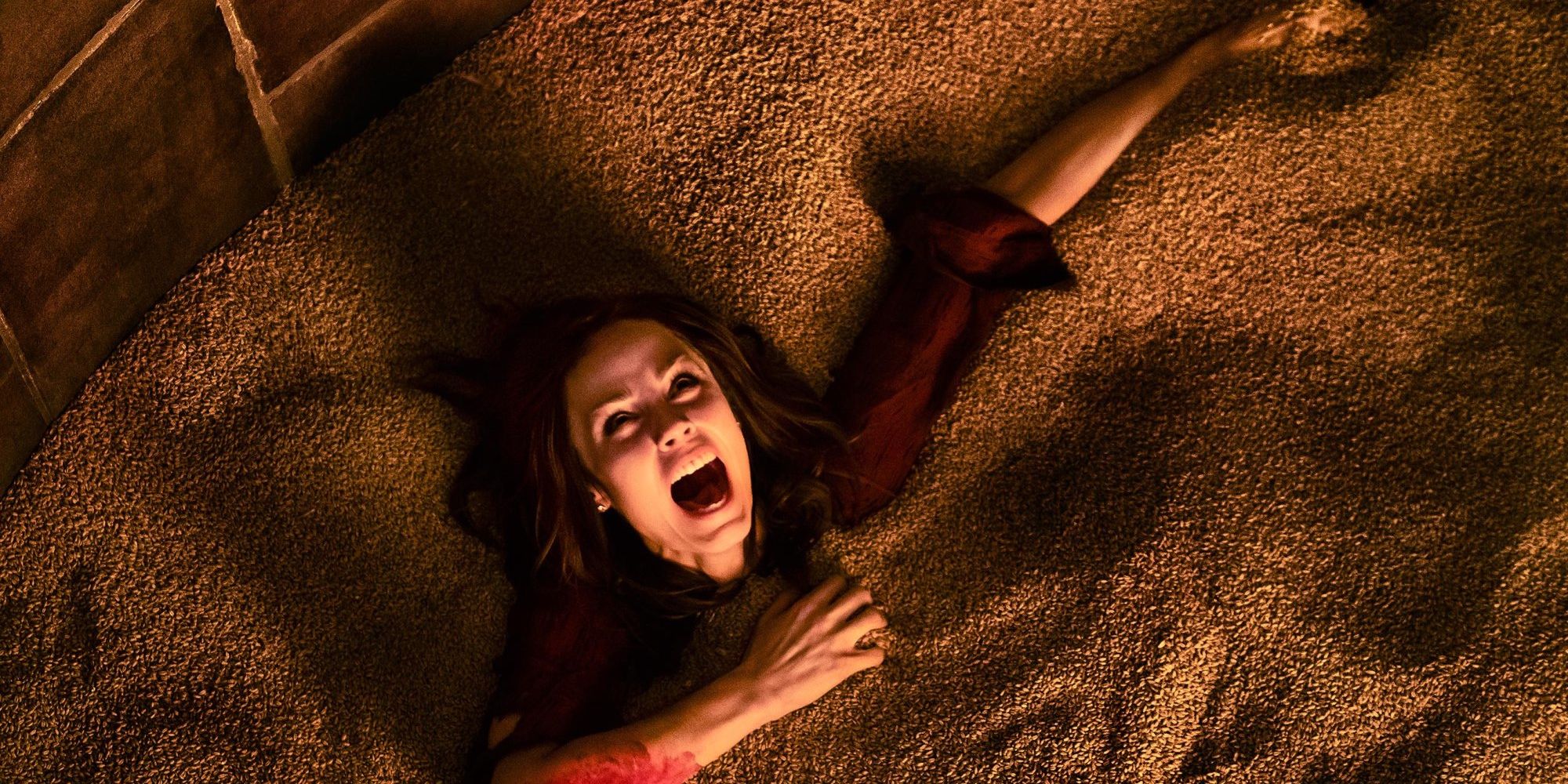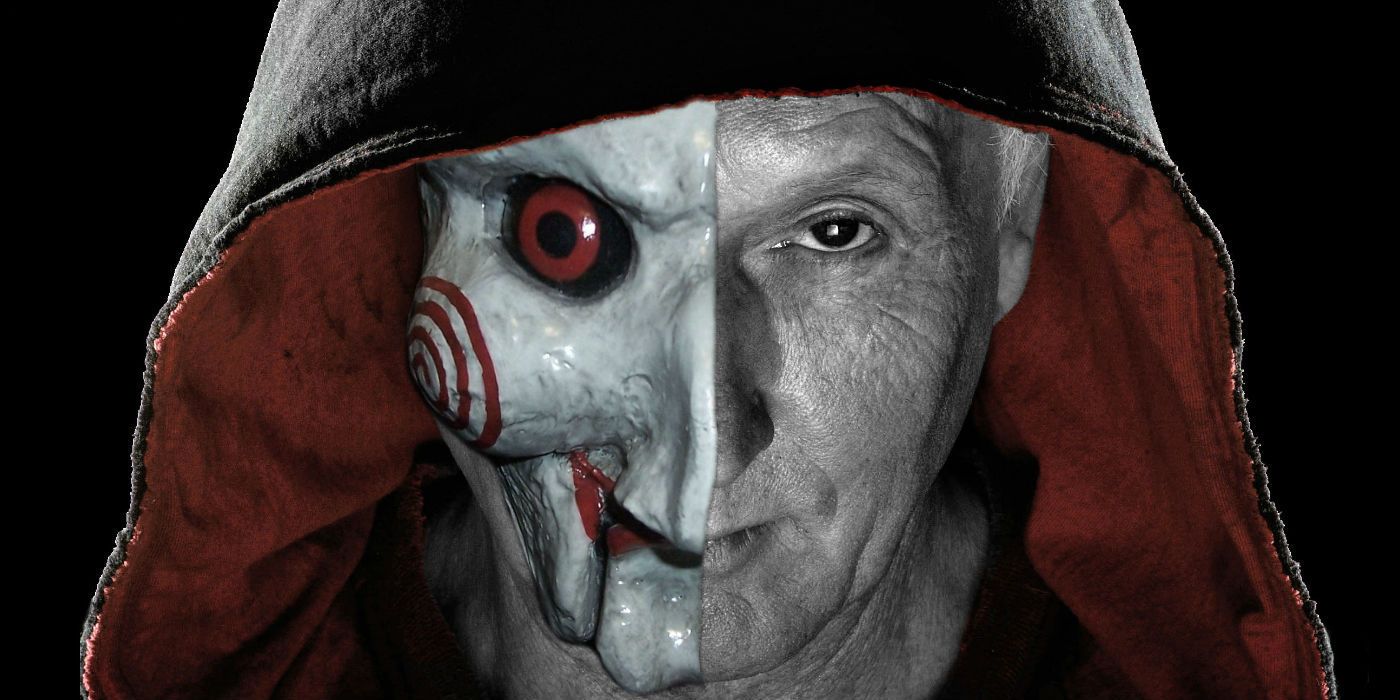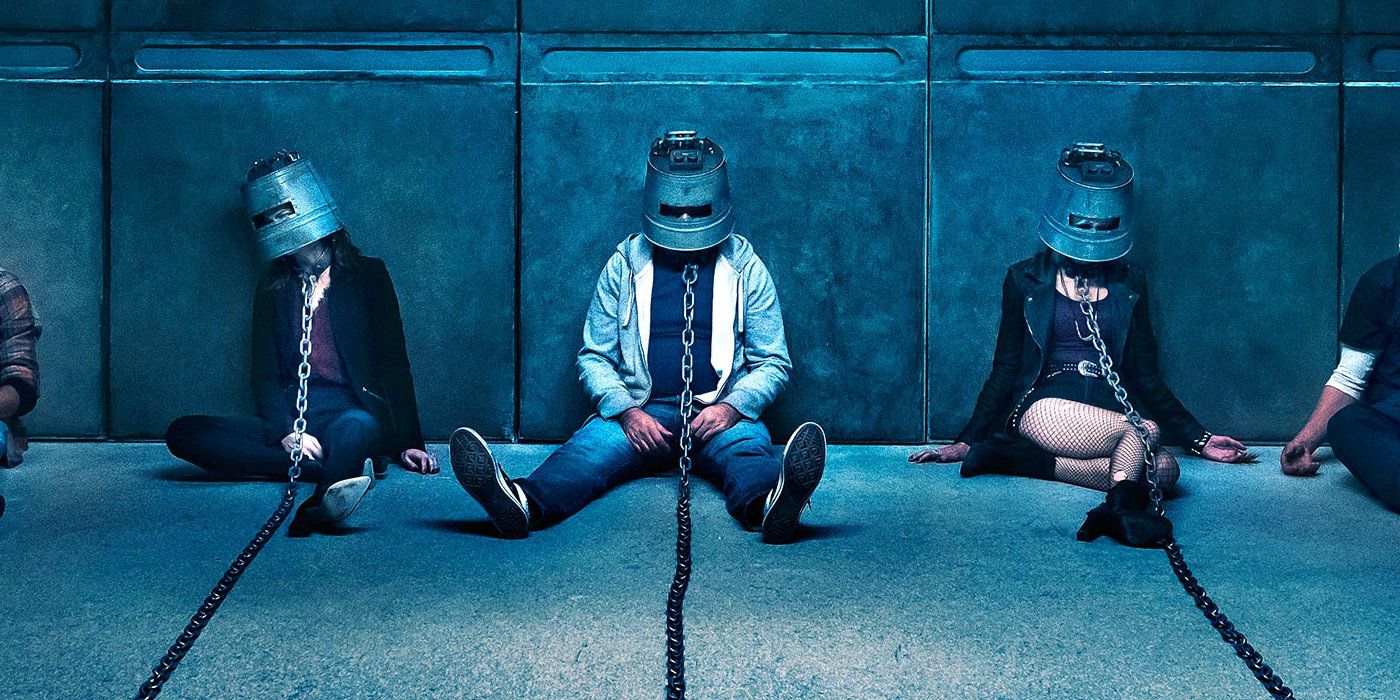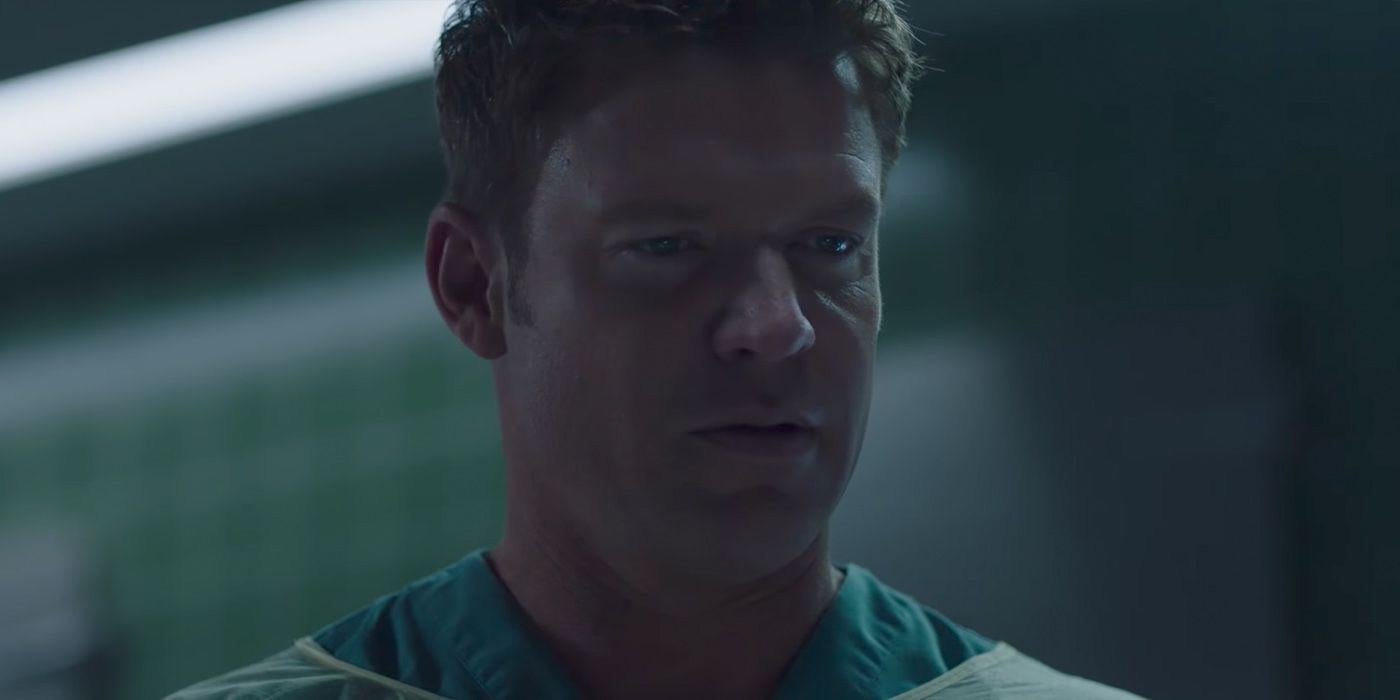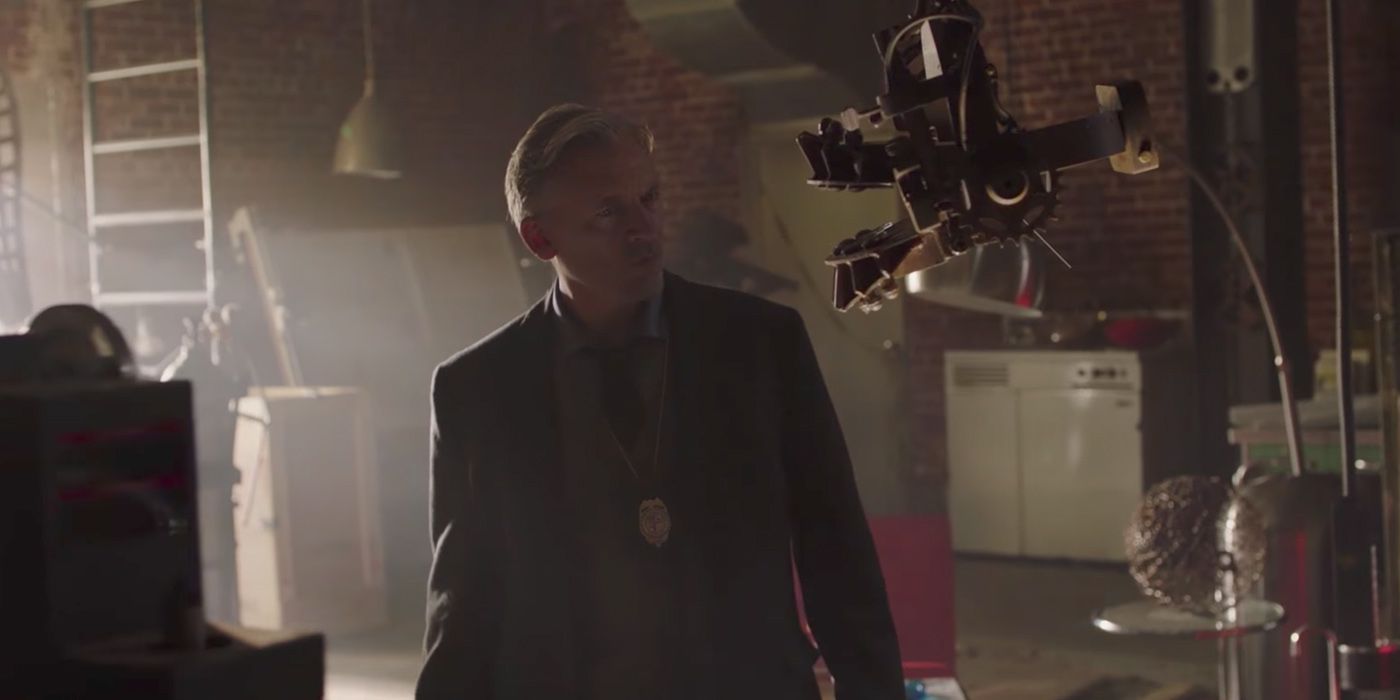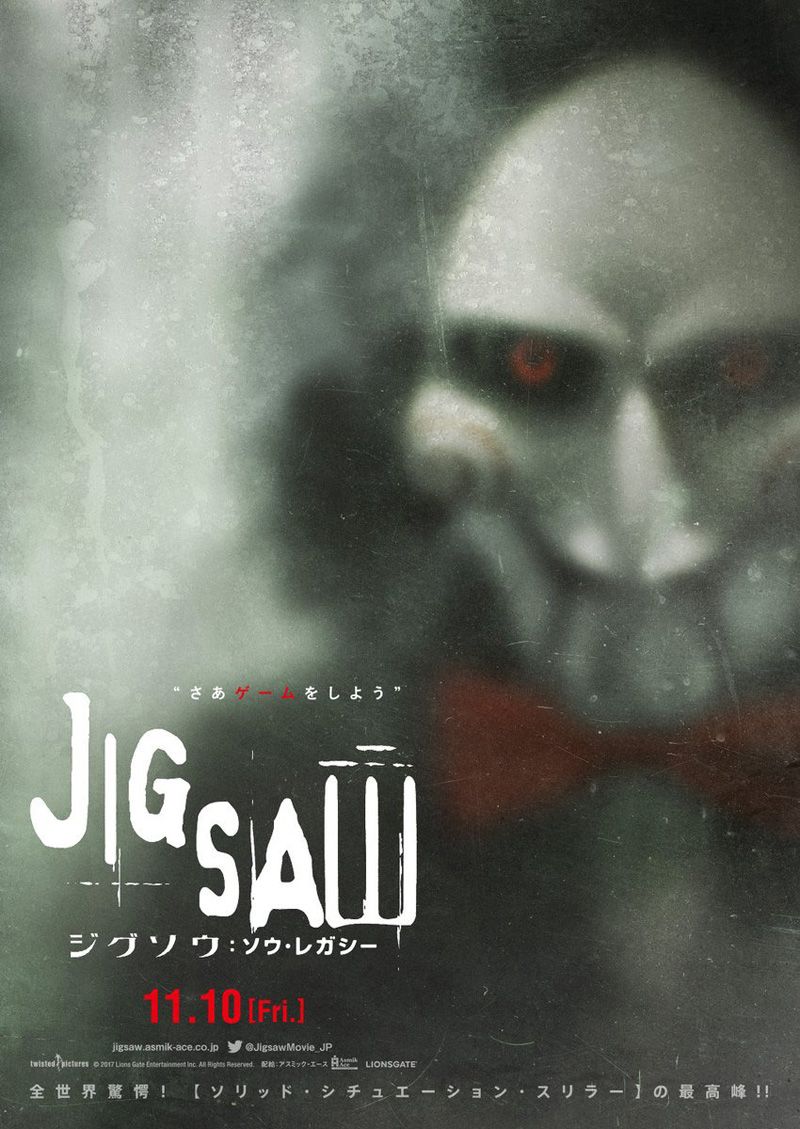Major spoilers for Jigsaw.
-
If it's Halloween, it must be Saw. And if it's Saw, there must be a pretty massive twist ending. Jigsaw doesn't disappoint, with a copycat killer mystery, narrative-scattering double-twist and one hell of a violent end-note.
While it made its name for the unsettlingly inventive gore traps, what really helped connect audiences to Saw was its ever-evolving story; each film deepened the lore of the Jigsaw Killer - real name John Kramer - his disciples and corrupted moral ethos, typically topping it all off with a shocking rug-pull. It's been over half a decade since the now-humorously titled The Final Chapter, but it's very much business as usual in the eighth entry.
Next: Saw Movie Series: The Complete Guide & Jigsaw Timeline
Jigsaw picks up ten years after the death of Kramer, and a good seven after the previous film as a new (seeming) copycat emerges. Detective Halloran, a brash, no-nonsense cop, is dragged into the case by long-term criminal counterpart Edgar Munsen. As he tries to unravel the returning threat, five unlucky (but potentially deserving) victims find themselves in an elaborate series of traps in an isolated farmhouse. Lots of blood and even more suspicion of who the new killer is ensues. Let's take a look at what really went down.
The Traps and Their "Justice" Explained (This Page)
The Traps and Their "Justice" Explained
Jigsaw is, like every film in the series (albeit in a very skewed way), about atonement for sins. What the eighth entry really steers into more than any other, though, is retribution from the dead. All of the victims are those who have led to the death of another and repeatedly avoided facing up to the fact: Carly stole the purse of an asthmatic woman who had an attack chasing her; Mitch sold a bike knowing its brake fluid was leaking; Ryan's drunken antics led to a car crash involving his best friends that he blamed on them; Anna suffocated her baby and pinned it on her husband, who killed himself in prison. All of them took advantage of others to pass blame, something Jigsaw aims to address.
Each of the traps are made to force a stage of this of development. First, they must shed blood as a form of sacrifice, then each person gets their own challenge: Carly must admit she let a person die for $3.53 by choosing the relevant syringe to cure poison Jigsaw's given her (she can't and winds up with acid in her bloodstream); Mitch has to experience the unchecked speed and ferocity of the bike he sold in a giant, spinning machine (narrowly missing out on the brake); and finally Anna and Ryan are given the chance to recognize that salvation doesn't come from more murder (they don't take it). The silo and door traps in the middle of the film don't quite fit this grand plan (and, frankly, make little sense in terms of plot), but can be argued to still promote the notion of self-sacrifice and working together.
In the end, all of the subjects die - as is wont of Kramer's games - although in this case it's purely as a result of their greed; Anna tries to shoot Ryan with a backfiring shotgun, blowing her own face off and in the process destroying the keys that would have freed them. Plainly, they reject repentance.
But the victims are only part of Saw - the real good stuff when you get to the killer.
The "Return" of John Kramer
The big question running through Jigsaw is who exactly the killer is. The answer is complicated.
Let's start with the farm. After the first three victims have been incapacitated via various skin-crawling (and tearing) means, Anna and Ryan are drugged and find themselves chained up in a labratory where the killer manipulating everything is revealed to be none other than... John Kramer. Yes, the original Jigsaw is the one behind the spinning blades, acid syringes, silo torture and elaborate razor spiral.
Anna recognizes him, although not from his crimes but rather his previous life; we learn he lived next door to her when first diagnosed with cancer, during which time he overheard the child's death. This is the second link between Kramer and the victims - his nephew was sold the faulty bike by Mitch - and while it isn't stated, it seems likely the others were also connected to him somehow: Ryan's drunken car crash and Carly's asthamtic robbery victim probably involved related family members or similar. That's important because it shows something a little different about Jigsaw's targets this time - something essential.
After all, from the moment Bell turns up, as captivating as ever in his signature role, the audience is left asking how exactly he survived the events of Saw III (in which his cancer was removed but his throat slit by a power-saw). The answer is, well, he didn't.
Jigsaw Is Set In Two Timelines A Decade Apart
It's revealed at the end of the film that the entire farm sequence was actually Jigsaw's very first game, taking place before any of the previous movies; at this point he's just decided to seek retribution for his cancer diagnosis, trying to make others appreciate life (just don't question why the traps are so much more elaborate). That's why he went for flawed people he knew, and why - in contrast to most victims who figure out they're in a Jigsaw game from his publicity - Anna and co. have no idea what's going on and must slowly figure out his rules; they are the first. The twist also provides a few more pieces of how Kramer became Jigsaw; the farm was owned by Kramer's wife, a key presence in the later original films killed in The Final Chapter, and among its livestock were pigs, providing some explanation for his affinity with the animal.
For eagle-eyed viewers, there were actually quite a few clues things weren't perfectly lining up that initially seemed like timeline flubs; characters were seemingly not ageing in the ten year gap between Kramer's death and the "present", and the bodies that turned up counting down the murders had different wounds compared to what we saw at the farm.
Long-time Saw fans won't be too surprised by this either. The timeline switcheroo was the previous big twist in Saw II, and in the films set after his death Jigsaw appeared in flashbacks that often played with audience perception. Still, none went quite this big, and going back to his baby steps does fit well into the film's exploration of Kramer's legacy.
The Final Twist: The REAL Jigsaw Copycat
Until the Kramer reveal, Jigsaw throws out plenty of copycat potentials. The first obvious option is mortician Eleanor, who get perverse enjoyment over working on Jigsaw victims (she's a fun commentary on fans of torture porn movies) and, it emerges, has a near-fixation with his crimes; she's dove deep into details on the dark web and acquired a near complete set recovered traps (even making one of his undiscovered first experiments from Kramer's blueprints - something that turns up in the farm and is thus one of the most overt clues of the timeline switch up). Then things flip, with Elanor's boss Logan pointing the finger at Halloran, already established as a cop willing to bend the rules for justice. However, it turns out both of these accusations are part of the real copycat's plan.
The Jigsaw copycat is Logan. He was the hospital worker who accidentally mislabelled Kramer's first scans detailing cancer, leading to a late diagnosis and thus inadvertently creating Jigsaw. As a result, he was one of the chosen subjects in the first game - the sleeping victim who was seemingly shredded in the buzz saw trap - but the lack of severity to his crimes played on John's sympathy; Kramer saved him at the last minute and instead starting building him up as an apprentice. They worked together on the classic traps - ones that Logan showed a particular interest in when seeing them in Eleanor's collection years later - and developed their doctrine: they don't show anger or vengeance, but speak for the dead.
He's emerged now with a purpose: Logan isn't just replicating Jigsaw's style with his killings, but specifically evoking that initial game - the one that almost got him killed - in an attempt to get revenge on Halloran. The detective's not just an extreme cop but an amoral one; violent, crooked and self-serving, his actions have led to murderers going free and the deaths of innocents, including Logan's wife (she was killed by Edgar Munsen).
It's a pretty complicated scheme. On the one hand, Logan's got to make it look like Jigsaw's back; he adjusts audio from Kramer's original tapes - which, as his apprentice, he has access to - to create "new" recordings and sources frozen blood to make it look like the original killer survived. On the other, he needs to put suspicion on Halloran; the victims of the traps are criminals who were aided by his corruption, a typically twisted form of justice and clues to the detective that this is really all about him. And, killing aside, he has to manipulate Eleanor to ensure he has an alibi (a meta-joke about how fans enable the Saw series).
It all goes well and comes to a head with a rigged trap where the nemeses both appear locked into laser neck braces that will go off on "Jigsaw's" command unless they confess to their true crimes; however, Logan's is a fake, something he reveals just before slicing Halloran's head into eighths. This may seem like a straight-up murder, lacking the opportunity for freedom that made Kramer so insularly moral (and previous copycats so flawed), but we have to assume Logan was open to mercy, only going through with it after Halloran selfishly tried to save his own skin by setting his opponent's off first. Logan's main goal to pin the murder on Halloran and have the world see the detective for what he really is, something that'd happen regardless of death.
The upshot of this is that Jigsaw isn't just about the emergence of another copycat, rather the ascension of the original apprentice. Kramer's been followed by several acolytes before - Amanda in Saws I-III, Mark Hoffman in Saws IV-VII, Lawrence Gordon in The Final Chapter - but Logan pre-dates all of those. He's the ultimate successor, and perhaps the most natural; not only was he first but his past in Iraq - we learn early on he was captured in Fallujah - makes him almost a conduit for the dead.
-
And, with that in mind, perhaps the most striking thing about Jigsaw's ending for Saw fans to whom retconning twists and timeline rug-pulls are commonplace, is the final line. Every film thus far has ended with the iconic "Game over", but here Logan's signs off with "I speak for the dead". For him, the game is only just beginning.

